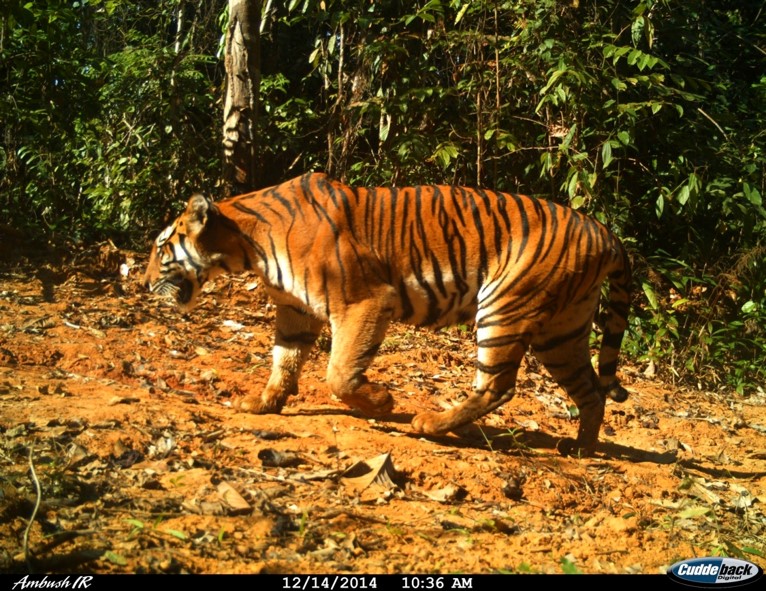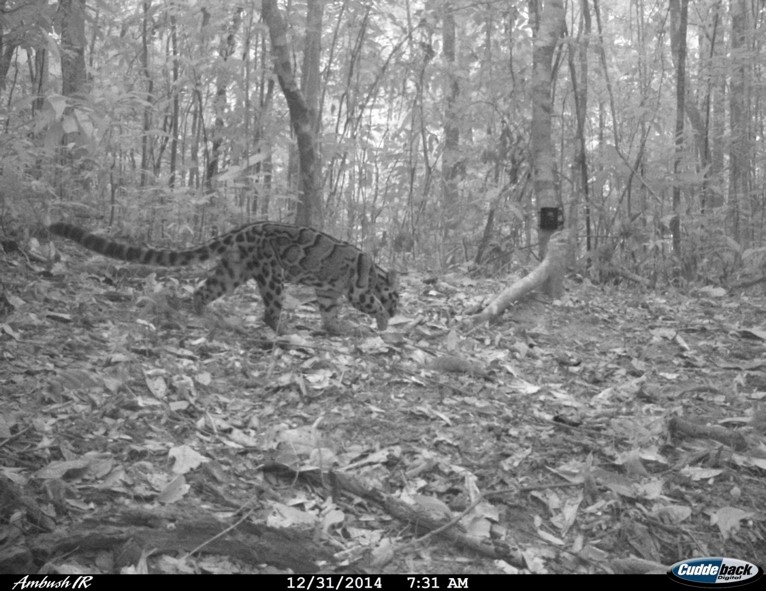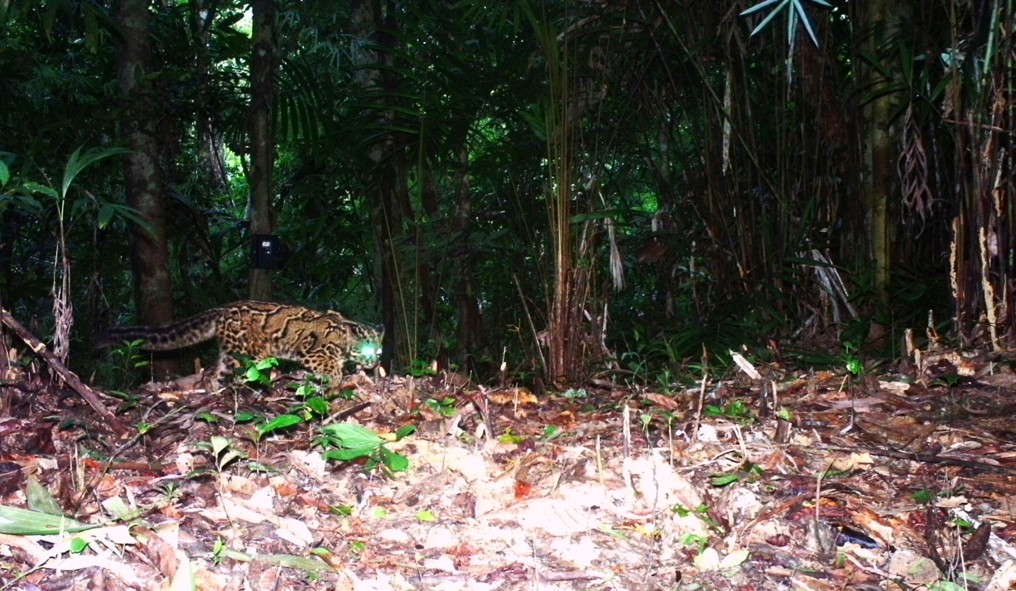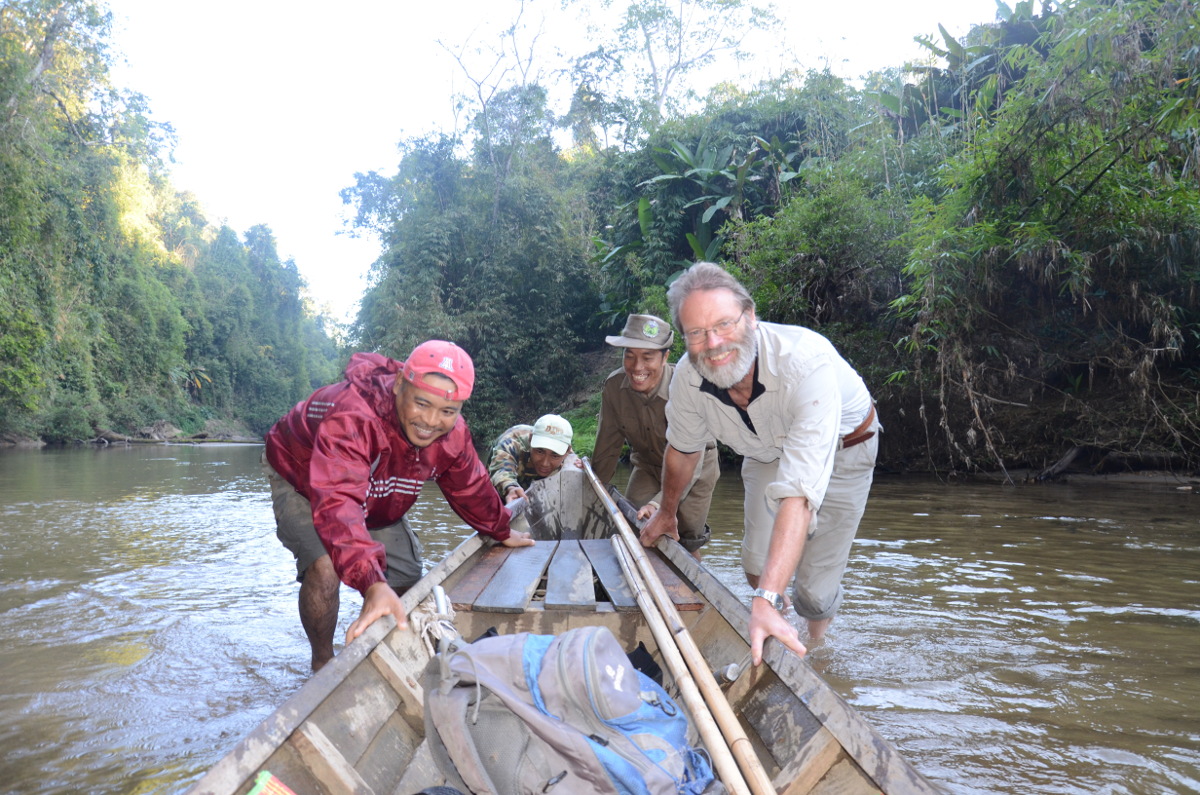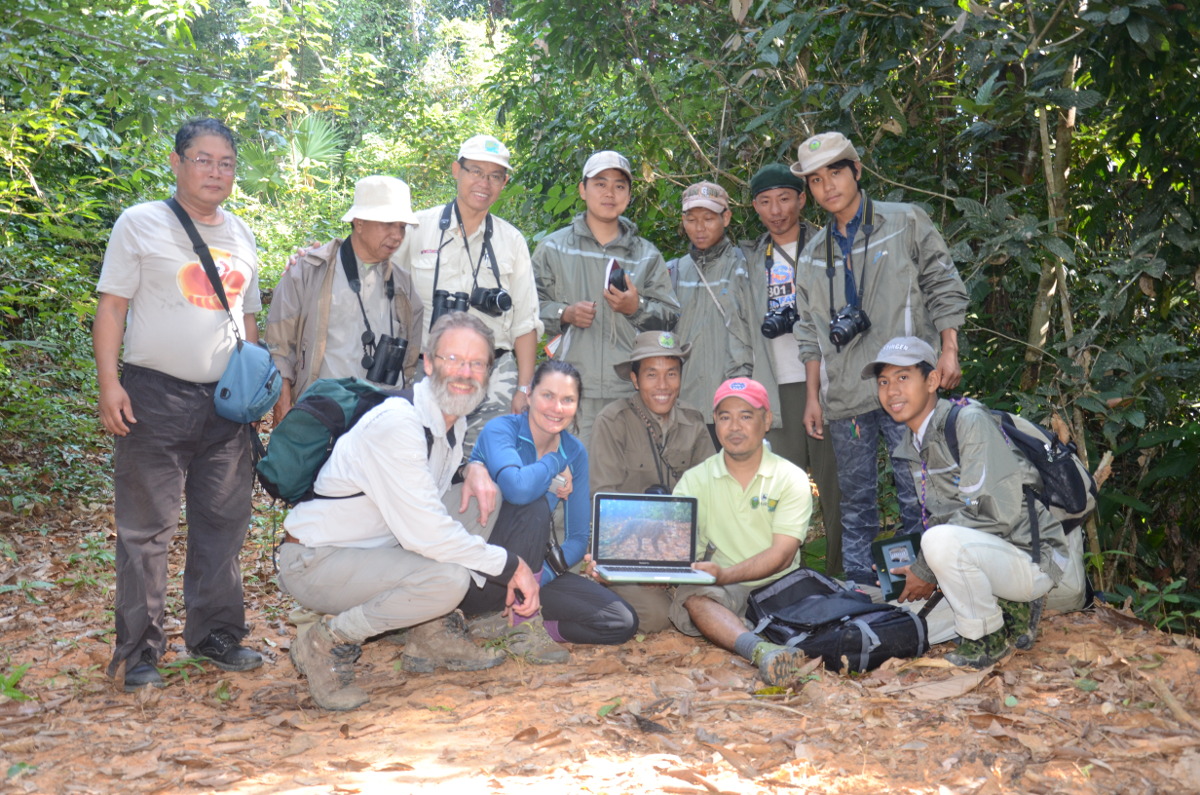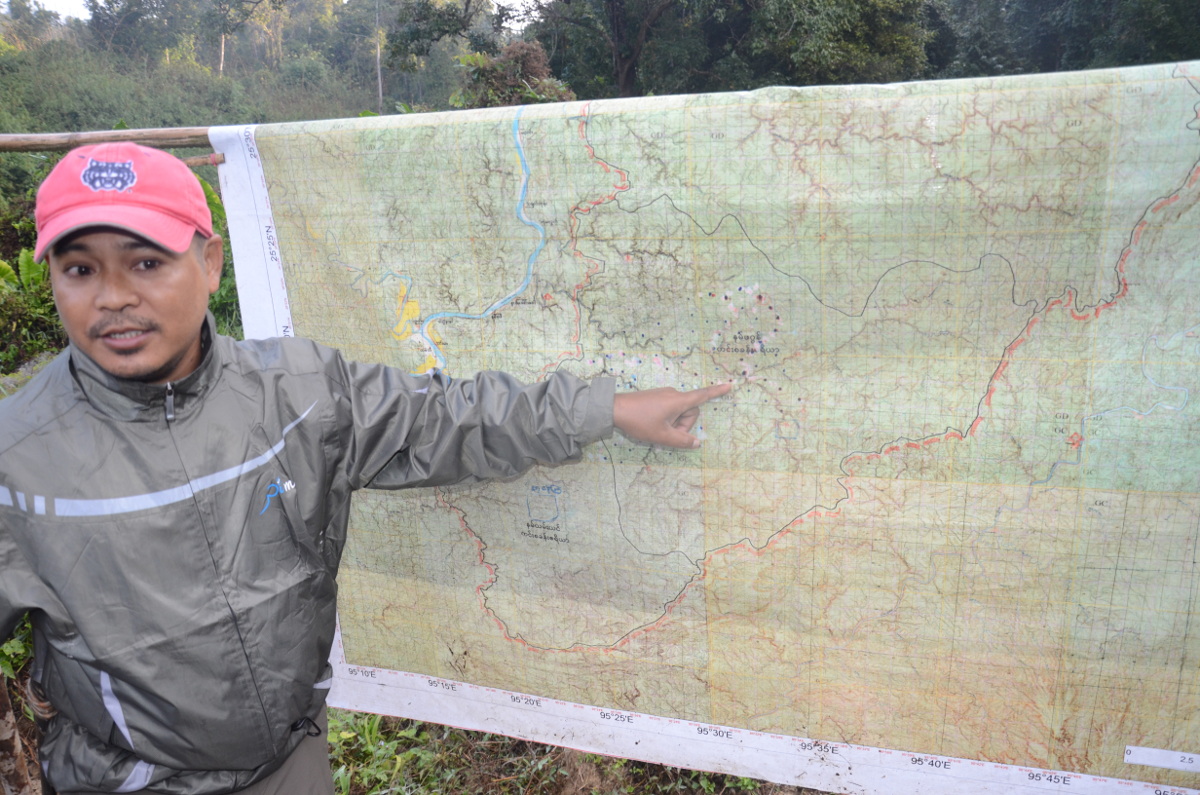News
Ex-Panthers find marbles amongst the clouds
As Dawn Burnham and I wove our way through the Htamanthi Wildlife Sanctuary in the north of Myanmar, writes David Macdonald, we were accompanied by a remarkable team. Foremost was Saw Htun – a distinguished Panther. Panthers, as surely everybody knows, is the name given to alumni of the WildCRU’s remarkable Postgraduate Diploma in International Wildlife Conservation Practice at the Recanati-Kaplan Centre, and Saw Htun is a particularly distinguished alumnus of that elite. Nowadays, Deputy Country Programme Director for WCS Myanmar, ex-Panther Saw Htun is the lead partner in our clouded leopard project in Myanmar. In that remote uphill trail he was accompanied by our team’s technical coordinator, Hla Naing, who has also spend time on the Panther course at Oxford, and a further 11 field staff, representing a wonderful integration of four different ethnicities from the region and bringing together more than 100 years of camera trapping experience between them. After an hour the wending uphill trek brought us to the first camera trap. On that January day in 2015 it was the first occasion the cameras had been checked since completion a few weeks earlier of the Herculean task of positioning all 160 of them in a grid of 180km2. At that first camera we squeezed the SD card into our lap top, looked at the first image, and to a cheer of excitement and much hugging, saw a beautiful tiger had passed that way not long before us. The next photo revealed a clouded leopard. Over 14,000 camera-trap days later, we have quite a story, and it is just published in the journal Oryx.
We deployed cameras in both 2014-15 and 2015-16, first around the Nam Pa Gon stream (Catchment 1), and then around the Nam E Zu stream (Catchment 2). In Catchment 1 we identified 5 tigers, 5 clouded leopards and 11 marbled cats. In Catchment 2 the respective figures for tigers, clouded leopards and marbled cats were 2, 9 and 12 individuals. In catchment 1 an elegant technique called Bayesian-based spatial capture-recapture analysis allowed us to estimate that there were 0.81 tigers and 0.60 clouded leopards per 100 km², the following year in Catchment 2 the tigers were too few to estimate but there was a fivefold greater density of clouds at 3.05 per 100 km2 along with 8.80 marbles per 100 km2.
These comparisons raise the questions of what might explain the markedly lower numbers of tigers in Catchment 2 in comparison to Catchment 1, and indeed the greater density of clouds in Catchment 2. The team’s paper in Oryx poses three obvious, and not mutually exclusive, hypotheses. First, between the two sites there was a difference in habitat or prey availability, or some other environmental variable, or second that between the two survey periods conditions changed or third that some other factor, such as human activities caused the differences in cat guild structure, either directly and/or indirectly. Insofar as the two catchments are separated by less than 20 km, and seem generally similar, the habitat hypothesis is unpromising. Insofar as scarcely twelve months separated the two surveys, the temporal change hypothesis is also unpromising. However, in 2013 incidents of gold mining were 14 times higher in Catchment 2 than in Catchment 1 and over 80 snares were removed from Catchment 2 compared with 0 in Catchment 1 over a similar patrol effort. This ominous coincidence suggests to the team that these people might influence wildlife in several ways. Their activities might create a landscape of fear amongst both the felids and their prey, they might also affect the tigers directly by killing them, and indirectly by killing their prey; a further possibility is that the domestic stock trafficked through the protected area could communicate disease to the wild ungulates.
These findings suggest that within Myanmar’s Northern Forest Complex Htamanthi is important for felid conservation, and that draws our attention to the unprotected adjoining area, the Yawbawmee corridor, which links it to the Hukaung Valley Wildlife Sanctuary in the north. Surely this is strong evidence that the Yawbawmee corridor is an important candidate for protection.
Read more about our Clouded Leopard Programme.






